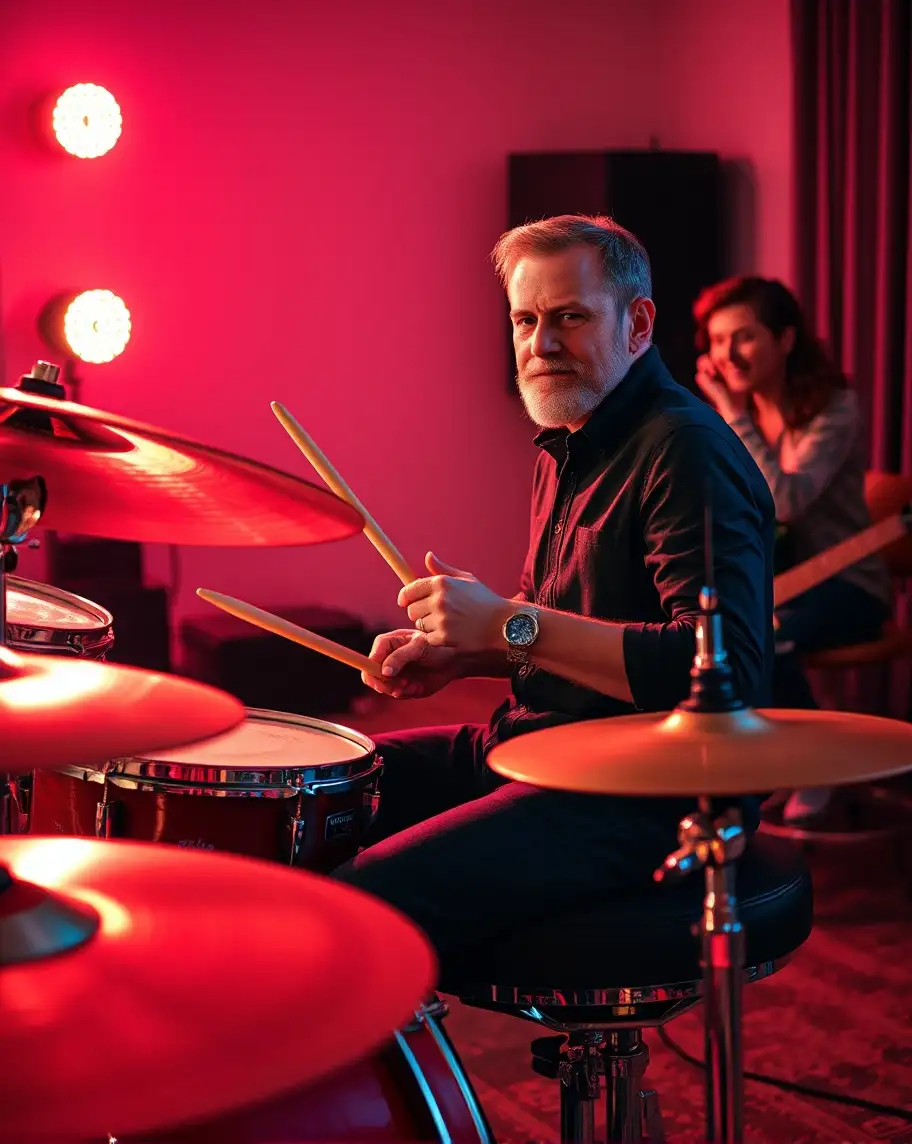Expert Tips for Recording Instruments Like a Pro
Master studio-quality sound in your home studio with expert tips for professional clarity and depth.
In music production, recording instruments is an art in itself. It’s not just about pressing ‘record’ and hoping it sounds good. There’s a whole science behind capturing the true sound of each instrument, and I’m here to walk you through it.
Take a grand piano, for example—it’s all about those deep, resonating lows. Or think about recording a violin, where you have to manage those sharp, high notes. Every instrument comes with its challenges, but with the right techniques, you can record them like a pro.
Imagine you’re a music producer working on a project in your home studio. You’re layering different instruments, trying to capture the perfect sound for each one. Maybe you’ve got a singer-songwriter with an acoustic guitar, and you’re struggling to get that rich, full sound you hear in professional tracks.
With the tips I’m about to share, you’ll learn how to tackle that and more, taking your recordings to the next level. Whether you're an experienced producer or just starting, stick around—these best practices will make a difference in your music!
Essential Tips for Getting Top-Quality Sound
Recording instruments requires specific techniques tailored to each instrument’s unique sound.
Here are key tips for achieving professional quality:
Capturing the Full Warmth of Acoustic Guitar
Capturing the warmth and resonance of an acoustic guitar is essential to showcasing its unique qualities, but it can present challenges. To accurately capture these subtle details, there are three key elements to consider:
Microphone Choice
The microphone you use plays a big role in how the guitar sounds on the recording. A small diaphragm condenser mic is a favorite because it picks up details and handles high frequencies well.
Microphone Placement
Where you place the mic is just as important as the mic itself. Each guitar has its unique sound, so there’s no one-size-fits-all placement. A good starting point is putting the mic about 12 inches from where the neck meets the body of the guitar. This tends to give a nice balance of lows and highs. But don’t stop there—move the mic around while the guitarist plays and listen for the best spot.
The Room’s Impact
Don’t forget about the room! The acoustics of the space you’re recording in can really affect the warmth of the guitar. A treated studio will give you a clean sound, but sometimes recording in larger spaces like a living room or stairwell can add a natural echo that enhances the sound in a cool way.
Recording an acoustic guitar is a fun and creative process. By playing with mic placement, experimenting with different rooms, and making sure the musician is comfortable, you can capture the guitar’s full warmth and personality. There’s no strict rulebook—part of the magic is figuring out what works best for each session.

Recording Tips for Grand Piano
Recording a grand piano isn’t exactly easy. With its rich, complex sound created by around 230 strings, it takes more than just putting a mic in front of it to capture its full character. You’ve got to understand the instrument’s unique nature, how different parts of the piano contribute to the sound, and how the recording environment affects the final result.
Microphone Placement
Mic placement is key. A simple but effective approach for beginners is to use two mics: one near the low end of the soundboard and the other closer to the high strings. This setup captures the deep resonance of the lower notes and the brightness of the higher ones. Of course, adjustments might be needed depending on the piano’s tone and balance.
While close micing is popular, I’ve also had great results with distant micing, placing the mics 3-6 feet away. This captures not just the piano’s sound, but also how it interacts with the room’s acoustics. However, be cautious—an untreated room with too much echo can mess with your recording.
Choosing the Right Microphones
Different mics have different pickup patterns and frequency responses, so choosing the right one is crucial. I’d recommend large-diaphragm condenser mics for their sensitivity and ability to capture the wide frequency range of a grand piano with clarity and detail.
Pianist's Dynamics
Don’t forget the pianist’s playing style. Encourage them to explore different dynamics, from soft, intimate playing to more powerful, energetic performances. This will give your recording depth and variety.
With these techniques in mind, recording a grand piano becomes less intimidating.
Recording a Violin: Tips and Tricks to Capture Its True Sound
Getting the true essence of a violin is all about finding the sweet spot with mic placement and knowing how to work with the instrument's natural sound.
First up, mic positioning is everything. Even small adjustments can lead to big differences in the sound. A good starting point is placing the mic about 12 to 16 inches away, aimed between the bridge and the F-holes, but don’t hesitate to experiment. Sometimes the best sound comes from unexpected places.
Like with piano recording, using two mics—known as a stereo pair—can add depth to your sound. This approach lets you capture both the direct sound of the strings and the room’s natural reflections. One mic can sit close to the violin, while the other stays further away to pick up the room’s ambiance.
Drum Recording Tips
Recording drums is both an art and a science. You’ve got to think about the room, the drum kit, the drummer’s style, and of course, the microphones you’re using. Let’s break down some key factors that help elevate your drum recordings and get that professional sound.
Room Acoustics
The room plays a big part in how your drums will sound. The way the drum kit interacts with its surroundings can make a huge difference. Try moving the kit around the room—whether it's centered, near a corner, or against a wall—each position changes how the sound reflects off surfaces. Mic placement and those reflections shape the overall sound, so experimenting is key.
Drum Kit Characteristics
Each part of the drum kit—every drum and cymbal—has its own unique tone. Knowing this will help you position your mics for the best sound. A standard setup is using direct mics for the kick and snare, overhead mics to capture the cymbals and toms, and a room mic to capture the ambient sound.

Mic Setup
When it comes to miking drums, sometimes less is more. A simple two-mic setup can do wonders. Place one mic near the kick drum and one overhead to capture the rest of the kit. This minimalist approach can often produce a well-balanced sound without needing to mic every single element.
Drummer’s Style
Don’t forget about the drummer’s playing style. Whether they’re playing with soft brushes or hammering out hard rock beats, every hit impacts how the drums will sound in the recording. Encourage the drummer to play naturally, as they would in a live performance, to capture their true vibe.
Patience and Experimentation
Patience is key. There are tried-and-true techniques, but there’s also a lot of trial and error. Keep adjusting, listen closely, and stay flexible. The more you experiment, the better your chances of capturing an amazing drum sound.
By blending these techniques with a bit of creativity, you'll be well on your way to getting a great drum recording.
Mic Placement and Techniques for Recording Brass Instruments
Brass instruments are all about big, bold sounds, but capturing that powerful resonance can be tricky. First off, brass instruments project sound directly from the bell, so where you place the mic makes a huge difference. A solid starting point is placing the mic a few inches from the bell at a 45-degree angle. This helps capture a balanced tone with both brightness and depth.
Room acoustics also play a major role in how brass instruments sound on a recording. These instruments need room to "breathe," and even a little bit of natural echo can really enhance their richness. Just be careful not to record in areas where the sound might get too loud or harsh—every room has its “bright spots” to watch out for.
Choosing the right mic is key, too. Ribbon mics are a great option for brass because they can handle high sound pressure levels without distorting. Plus, they naturally add a bit of warmth to the sound, which can save you some time in post-production EQ.
Tempo and Dynamics
But it’s not all about gear and mic placement. You’ve also got to consider the song’s tempo and dynamics. For fast-paced tracks, a more open room with some extra reverb can give your brass that lively, energetic feel. On the other hand, for slower, soulful tunes, you might want to close-mic the instrument and use EQ to add warmth for a more intimate vibe.
Of course, these are just starting points—every recording session is unique. It’s all about experimenting and fine-tuning to get the best sound. Next, we’ll dive into recording string and wind instruments, exploring even more techniques to help you achieve that perfect sound.
Tips for Recording Woodwind Instruments
When recording woodwinds, it’s important to remember that these instruments have a wide range of tones and pitches. Each one has its unique sound, so let’s explore some key tips for capturing them effectively.
Mic Placement
Mic placement is crucial when recording woodwinds. Instead of pointing the mic directly at the bell, remember that sound also comes from the keyholes along the body. Try different mic positions to find the sweet spot—higher placements might capture brighter overtones, while lower spots can pick up the warmer, bass tones.
Microphone Choice
Using a good-quality microphone makes all the difference. Higher-end mics tend to have a better frequency response, which is important for capturing the full range of woodwind tones. Here’s a quick breakdown:
Condenser
Ideal for capturing crisp, high-frequency details with clarity and precision.
Ribbon
Perfect for delivering a smooth, warm sound, especially in the low to mid-frequency range.
Dynamic
A robust and versatile option, great for general use across various recording situations.
Room Acoustics
Don’t forget about the room’s acoustics. Woodwinds, while sometimes soft, can produce quite a lot of volume. Without a well-treated room, you may end up with more echoes and reverb than you want.
Managing Volume Levels
Managing volume levels for woodwinds can be challenging due to their wide range, from soft pianissimo to loud fortissimo. It’s important to adjust recording levels carefully to capture these dynamics without causing distortion.
While following best practices helps, continual experimentation and trying new techniques is key to perfecting your woodwind recordings.
Final Thoughts
Recording instruments is truly an exciting journey! Each instrument brings its quirks and challenges, but with the right techniques and a bit of experimentation, you can capture their true essence. Whether you're trying to get the warmth of an acoustic guitar or the boldness of brass, it's all about finding the perfect balance between gear, mic placement, and room acoustics.
So, take your time, trust your ears, and don’t be afraid to try new setups. With practice, your recordings will sound richer, more polished, and full of character.
Keep pushing those creative boundaries!
Blog Article Tags
guitar piano violin drums brass woodwind frequency experimentationMore Articles
Where To Find Good Indie Music - If you're a long time fan or first time listener of Indie music, we'll show you the best methods for discovering the music you love.
Seven Tips to Help You Become a Kickass Drummer - Learn secrets to becoming a great drummer with 7 practical tips.
Ten Reasons Why You Should Stay An Indie Artist - Let's learn about the advantages of staying independent in today's modern music landscape.
Storytellers in Sound: Exploring the Art of Concept Albums in Indie Music Scene - Nowadays it seems like the concept album is a lost art. Let's discuss it's history and importance.
X Factor UK vs American Idol - Amateur competitions are not new but do they matter for indie artists? Let's find out.


